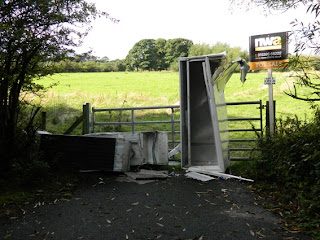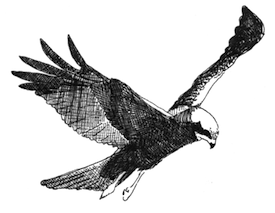 |
| Male reed bunting |
I've been lucky enough to have a couple of weekdays off lately, allowing me to get down to Aldcliffe early enough to cover the area while it's been relatively quiet.
Since the arrival of the first
green sandpiper on the 7th numbers have fluctuated a little peaking at 6 on the 15th. These have mainly been on the Wildfowlers' Pools, as one would expect, although birds have also visited Freeman's Pools and Frog Pond.
Little ringed plovers are still hanging around here and there with a pair at Freeman's Pools and couple of adults with 2 fledged young on the Wildfowlers' Pools. The young family were still present on the industrial estate and seemingly doing OK when I checked yesterday morning.
The new-in pair of
little grebe at Freeman's Pool were joined by a
third bird a couple of days ago and much 'winny-ing' has been going on.
Perhaps we'll see another late breeding attempt as has happened in
previous years?
Common sandpipers typically start gathering on the Lune at this time of year, along with the odd ones and twos on the pools. When I had a check at the traditionally favoured spot at The Creek on Monday morning I counted 17 - not too bad!
Snipe are reappearing on the patch with a couple on the Wildflowers' and Darter Pools. Similarly,
teal have started trickling in, peaking at 5 birds while
tufted duck numbers have increased to 5 on Freeman's Pools.
I also had a good root through the increasing
black-headed gull flocks on the river mindful of the
Bonaparte's gull seen at Heysham at the weekend. I even came across an enticing gathering of around 270 birds feeding in the water just off Stodday but I couldn't pick any likely looking candidates out from the mass of BHs. Of note, 4
little egret were also joining in the frenzy.
A cycle from Aldcliffe to Conder last week was reasonably rewarding as it allowed me to get a sense of the scale of movement and breeding success along the stretch of the estuary.
Common sandpipers were seen in small family groups,
shelduck with multiple ducklings and fledged
black-headed gulls and
lapwings were scattered alongside the route.
Sedge warblers,
blackcaps and
common whitethroat are still in fine song, while
reed buntings seem to have done pretty well with a handful of broods in the area.
At Conder itself there were 3
greenshank among the mass of roosting
redshanks and an adult
Mediterranean gull was a pleasant sight as it flew around over the estuary.
There wasn't much on the Conder Pools, just the dubious 1st year male
goldeneye and yet more common sandpipers.
Nearby a couple of
tree sparrows flew over, betraying their presence with their distinctive call.
Napolean Dynamite!
Bearing mind that I was regularly seeing
Bonaparte's gulls in considerable numbers during the three and a bit years I lived in Western Canada, I wasn't exactly chomping at the bit to see the Heysham bird this week.
However, given that I hadn't actually seen one in Britain since 1990 (yes, that's a whopping 23 years ago folks) I thought it would be rude not to pop along and have a look as it was just down the road. So, yesterday evening I grabbed my 'scope and bins and headed off to the glamorous coastal location of Red Nab and the Power Station Outfalls.
 |
| Bonaparte's gull - Heysham |
I arrived to find a small cluster of birders scanning the large number of roosting gulls on Red Nab, and my enquiries soon confirmed (albeit rather abruptly) that they were still looking for the North American vagrant. I started to scan through, soon finding a couple of
Med gulls among the many snoozing
larids,
oystercatchers,
curlew and a handful of
whimbrel.
Another birder arrived and made similar enquiries to which I, in a hopefully more helpful and friendly manner, updated him on progress. Within seconds this same chap announced 'got it', and indeed he had!
Over the course of the next hour or so the bird played with us a little, often bedding down behind other birds or in little crevices but after a 'big flush' it resettled on a rock and posed nicely for a time. I even manged to get the just about discernible digi-scope picture shown here. If you think this photo's bad, please bear in mind that this was by far the best of a not-especially-amazing bunch...
A 'first' for the Lancaster & District recording area, this was a well deserved find for the diligent birders who located and identified this rare gull.






































